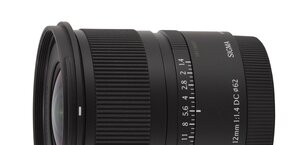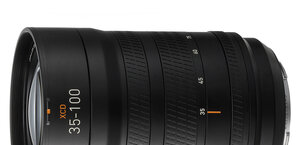Sigma A 12-24 mm f/4 DG HSM
8. Vignetting
| Canon 50D, 12 mm, f/4.0 | Canon 50D, 12 mm, f/5.6 |

|

|
| Canon 50D, 18 mm, f/4.0 | Canon 50D, 18 mm, f/5.6 |

|

|
| Canon 50D, 24 mm, f/4.0 | Canon 50D, 24 mm, f/5.6 |

|

|
Those results are a very positive surprise. At the very difficult combination of 12 mm and f/4.0 there is no vignetting at all – the level we got amounted to just 9% (−0.28 EV) and it decreased to 7% (−0.22 EV) on stopping down the aperture to f/5.6.
Please Support UsIf you enjoy our reviews and articles, and you want us to continue our work please, support our website by donating through PayPal. The funds are going to be used for paying our editorial team, renting servers, and equipping our testing studio; only that way we will be able to continue providing you interesting content for free. |
- - - - - - - - - - - - - - - - - - - - - - - - - - - - - - - - - - - - - - - - - - - - - - - -
There are no problems in the middle of the focal range either: by f/4.0 and f/5.6 we got respectively: 12% (−0.38 EV) and 8% (−0.26 EV).
The biggest chances to notice the vignetting you get at 24 mm with the lens wide open – for those settings the aberration reaches 17% (−0.55 EV). The problem disappears on stopping down the aperture to f/5.6 where you get just 8% (−0.24 EV) of light fall-off.
Let’s check the situation on full frame – appropriate thumbnails are presented below.
| Canon 5D III, 12 mm, f/4.0 | Canon 5D III, 12 mm, f/5.6 |

|

|
| Canon 50D, 18 mm, f/4.0 | Canon 50D, 18 mm, f/5.6 |

|

|
| Canon 5D III, 24 mm, f/4.0 | Canon 5D III, 24 mm, f/5.6 |

|

|
For a combination of 12 mm and f/4.0 the brightness loss in the frame corners amounted to 45% (−1.72 EV). It is not a low value but still significantly lower than 62% shown by the Canon11–24 mm at 11 mm. What’s interesting, the new Sigma fares here noticeably better than the old model which was after all slower aperture-wise so its task was supposed to be easier. By f/5.6 the vignetting decreases to 29% (−0.98 EV), and by f/8.0 it reaches 19% (−0.60 EV). Further stopping down doesn’t have any measurable influence on this aberration.
There are even less problems in the middle of the focal range. At the maximum relative aperture the vignetting reaches 31% (−1.06 EV). It’s worth reminding here that in the case of the Canon that value was 41%. Stopping down the aperture to f/5.6 and f/8.0 allows you to reduce the aberration to, respectively, 24% (−0.79 EV) and 18% (−0.56 EV).
The maximum focal length seems to be the only place where the Canon can compete with the Sigma successfully in this category. By f/4.0 the Canon had a result of 32% and the result of the Sigma was by 3% higher (−1.25 EV). Still already by f/5.6 the vignetting level of the Sigma becomes moderate reaching 23% (−0.74 EV) and then, on stopping down to f/8.0 and f/11, it decreases to 16% (−0.52 EV).
 |
 |
 |






